The Surprising Regressivity of Grocery Tax Exemptions
Exempting groceries from the sales tax base reduces economic efficiency without achieving its objective of enhancing tax progressivity.
19 min readHow does Illinois’s tax code compare? How does Illinois’s tax code compare? Illinois has a flat 4.95 percent individual income tax rate. Illinois has a 9.5 percent corporate income tax rate. Illinois also has a 6.25 percent state sales tax rate and an average combined state and local sales tax rate of 8.86 percent. Illinois has a 1.95 percent effective property tax rate on owner-occupied housing value.
Illinois has an estate tax. Illinois also has a 66.5 cents per gallon gas tax rate and a $2.98 cigarette excise tax rate. The State of Illinois collects $7,379 in state and local tax collections per capita. Illinois has $13,094 in state and local debt per capita and has a 51 percent funded ratio of public pension plans. Overall, Illinois’s tax system ranks 37th on our 2024 State Business Tax Climate Index.
Each state’s tax code is a multifaceted system with many moving parts, and Illinois is no exception. The first step towards understanding Illinois’s tax code is knowing the basics. How does Illinois collect tax revenue? Click the tabs below to learn more! You can also explore our state tax maps, which are compiled from our annual publication, Facts & Figures 2024: How Does Your State Compare?
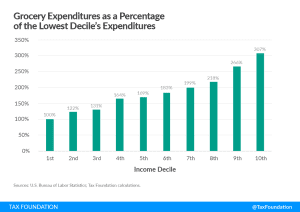
Exempting groceries from the sales tax base reduces economic efficiency without achieving its objective of enhancing tax progressivity.
19 min read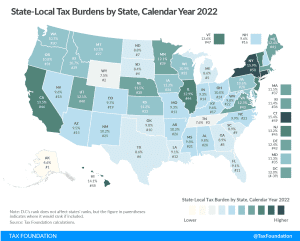
Tax burdens rose across the country as pandemic-era economic changes caused taxable income, activities, and property values to rise faster than net national product. Tax burdens in 2020, 2021, and 2022 are all higher than in any other year since 1978.
24 min read
After a whirlwind of cuts and reforms in 2021, it looks like 2022 might be an even bigger year for state tax codes. Republican and Democratic governors alike used their annual State of the State addresses to call for tax reform, and there is already serious momentum from state lawmakers nationwide to get the job done.
3 min read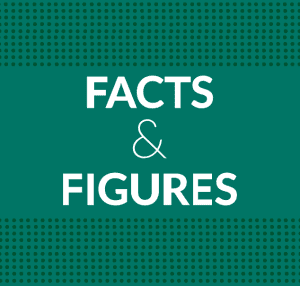
Facts & Figures serves as a one-stop state tax data resource that compares all 50 states on over 40 measures of tax rates, collections, burdens, and more.
2 min read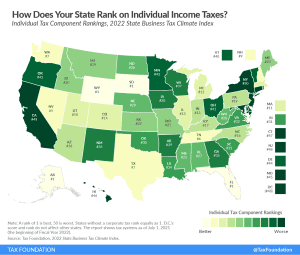
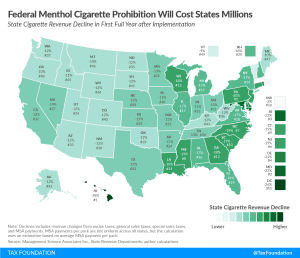
The FDA’s expected announcement of a national ban on menthol-flavored cigarettes and cigars with a characterizing flavor would carry significant revenue implications for both the federal government and state governments, with likely limited benefits in smoking cessation.
6 min read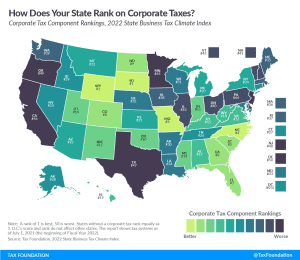
Unlike other studies that look solely at tax burdens, the State Business Tax Climate Index measures how well or poorly each state structures its tax system. It is concerned with the how, not the how much, of state revenue, because there are better and worse ways to levy taxes.
4 min read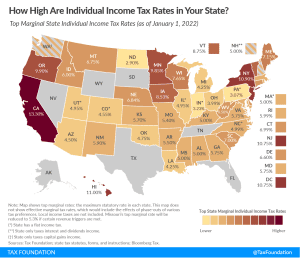
Individual income taxes are a major source of state government revenue, accounting for more than a third of state tax collections:
28 min read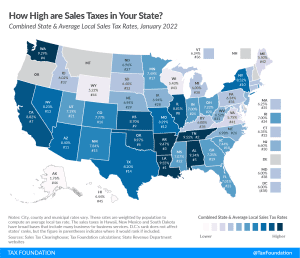
While many factors influence business location and investment decisions, sales taxes are something within policymakers’ control that can have immediate impacts.
12 min read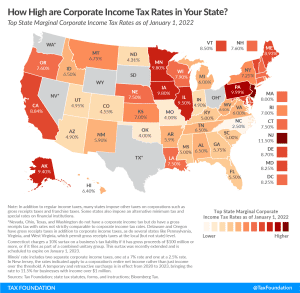
Forty-four states levy a corporate income tax. Rates range from 2.5 percent in North Carolina to 11.5 percent in New Jersey.
8 min read